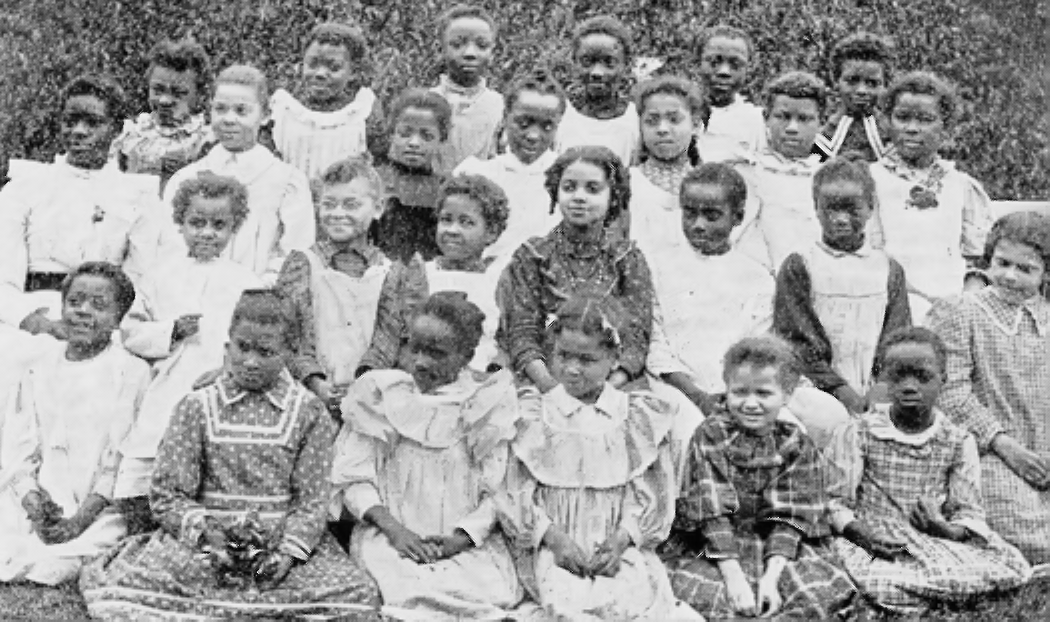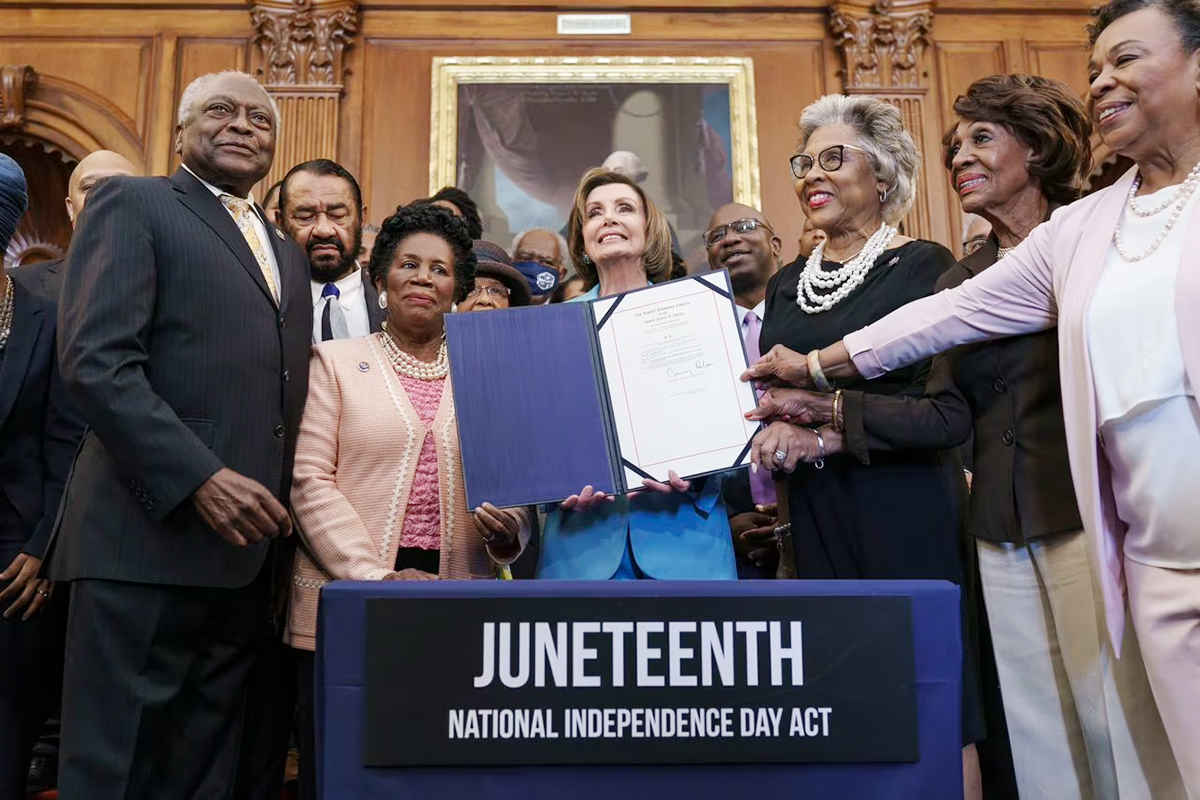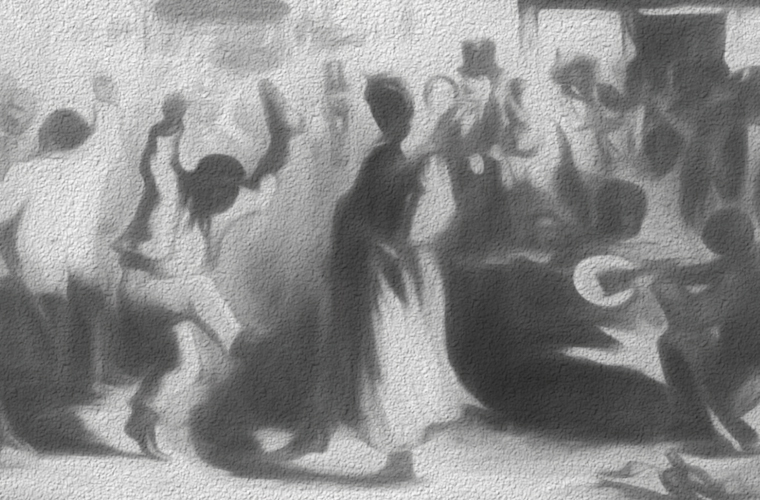The bleakness and brutality of slave life were alleviated, in small measure, by the celebration of holidays. Most slaves in the eighteenth and nineteenth centuries looked forward to several holidays during the year: Those residing in the South were allowed three major holidays, usually Easter, Christmas, and New Year’s Day; in the North, slaves, and freed people also observed Black Election Day and Pinkster.
Although the majority of slaves welcomed such respites from their grueling existence, a former slave and African American leader and journalist Frederick Douglass (1817–1895) believed holiday festivities were primarily a means to control and manipulate slaves rather than a gesture of appreciation or affection. In My Bondage and My Freedom, he wrote: “I believe these holidays to be among the most effective means, in the hands of slaveholders, of keeping down the spirit of insurrection among the slaves…. These holidays serve the purpose of keeping the minds of the slaves occupied with prospective pleasure, within the limits of slavery“.
Many scholars echo this interpretation. Shauna Bigham and Robert May (1998) note that many slave owners cared genuinely about at least some of their slaves, especially household servants, but caution that “unless historians relate slave Christmases to the peculiar institution’s exploitative context, they run the risk of leaving their readers with inappropriately benign imagery.” They write that granting material concessions to slaves allowed slaveholders “to maintain slaves‘ health and thus value in the domestic slave trade, as well as to avert the possibility of slave resistance and to encourage slaves to work harder.” Gift-giving at Christmas “confirmed the slaveowners‘ power even as it seemed to substantiate their pretensions to paternalism”
Holidays in the South: Customs and Constraints
Holidays, especially Christmas, took hold in the South earlier than in the North. Christmas became a legal holiday as early as the 1830s in some southern states. Orville Burton, in his 1985 study, attributes its mandatory celebration to slaves‘ manipulation of owners and not vice versa. Owners continually exhorted their slaves to accept the doctrines of Christianity and desired their conversion; thus, Burton argues, slaves may have used their conversions to persuade slaveholders to allow them to celebrate the holiest of Christian holidays, Christmas and Easter.

Of course, profit-making took precedence over the observance of holidays. On cotton plantations, where slave life was often harshest, celebrating Christmas was ancillary to getting the cotton picked and stored. Charles Ball, who was born circa 1781 in Calvert County, Maryland, was separated from his mother and siblings as a child. He later married and was separated again from his family when sold and sent to a cotton plantation in Georgia. In his narrative of his own life, he recalls one Christmas:
As Christmas of the year 1805, approached, we were all big with the hope of obtaining three or four days, at least, if not a week of the holiday; but when the day at length arrived, we were sorely disappointed, for on Christmas eve, when we had come from the field, with our cotton, the overseer fell into a furious passion, and swore at us all for our laziness; and many other bad qualities. He then told us, that he had intended to give us three days, if we had worked well, but that we had been so idle, and had left so much cotton yet to be picked in the filed, that he found it impossible to give us more than one day.
Economics, not a slave owner’s good nature, determined the celebration of holidays. If slaves were behind schedule in gathering, planting, or storing crops, only the most liberal and munificent slaveholders were granted more than a few hours or a day of holiday celebration. When not given time off, slaves might receive some paternalistic token, including gifts of clothing, special food items, household items, or cash.
The more lenient and generous slaveholders gave their slaves the entire week from Christmas to New Year’s, a stretch of a time long enough to travel, visit with relatives, marry, engage in games and sports, work for extra wages, or work for themselves cultivating crops, sewing clothes, or repairing household objects. During this period, most slaveholders took down the color barrier and attempted—with motives either sincere or self-serving—to treat their charges like family rather than property. Christmas was, for some slaves and their owners, the only color-blind holiday.

Christmas was a day for singing, dancing, performing, drinking, dining, and the exchange of gifts, with even the harshest of owners allowing celebrations and providing feasts and gifts, such as toys or candy for children and blankets or clothing for adults. Solomon Northup, who was born free in 1808 in Minerva, New York, was kidnapped at the age of thirty-three and forced into servitude. He was taken to Louisiana where he worked on a cotton plantation. In his book about his twelve years as a slave, Northup describes Christmas as a time of respite and festive celebration:
It was Christmas morning—the happiest day in the whole year for the slave. That morning he need not hurry to the field, with his gourd and cotton bag. Happiness sparkled in the eyes and overspread the countenances of all. The time of feasting and dancing had come. The cane and cotton fields were deserted. That day the clean dress was to be donned—the red ribbon displayed; there were to be re-unions, joy, and laughter, and hurrying to and fro. It was to be a day of liberty among the children of Slavery. Wherefore they were happy and rejoiced.
After Christmas came New Year’s, a time when slaves were generally given fresh provisions such as meat, vegetables, sugar, salt, remnants of cloth, and other household needs, which initiated another year of slavery. Once the year was underway, Easter was the next day to look forward to, when slaves could dress in their finest to attend religious services and often had the following day off. Some slaves were given an hour or two every Sunday for religious observance; for the many who were not, Easter was an important ritual and celebration. Easter observance among slaves also fulfilled slaveholders’ demands that slaves practice Christianity.
Holidays in the North
In the North and along the East Coast, slaves and freedpeople celebrated Christmas, New Year’s, and Easter, as well as Black Election Day and the Pinkster festival. Black Election Day began in the early eighteenth century in New England’s major cities as a parallel to white elections, with blacks choosing their own symbolic kings and governors. Celebrations of this day included a mixture of African American and European American activities, such as singing, dancing, racing, wrestling, and other sports and games. The postelection party featured a parade ending at the home of the winner’s master, who provided food and drink for the revelers. The elected black leaders enjoyed no actual power other than social status.
Whites found the holiday observances harmless and perhaps beneficial, as they could enlist the help of the elected black leaders to help keep up standards of behavior. Shane White, in his article on Black holidays, notes that “initially, slaves had merely participated in holiday activities organized by their masters, but gradually they took the festivals over, infusing them with new life and meanings, so that what had begun as white practices, relics of a European past, had by the end of the century become recognized as African American events”.
Pinkster began as a Dutch holiday, particularly in New York, celebrating springtime renewal (the word is derived from Pentecost, a Christian feast day seven Sundays after Easter). The holiday came to be closely associated with blacks, who infused it with their own African traditions. The Pinkster festival was celebrated over several days, with blacks allowed to take time off from work to travel to visit relatives. Celebrations featured large gatherings in public squares, with sports, dancing, music (particularly drumming), eating, drinking, and revels that poked fun at white masters.
According to White, African American festivals displayed “a striking dynamism and cultural fluidity…. There was a lightness of touch, a quality simultaneously threatening and tongue-in-cheek, an unpredictability, in the ways in which northern slaves used what they found around them to reinvent these holidays” (ibid.). Election-day festivities gradually lost steam in the latter part of the nineteenth century, following emancipation.

